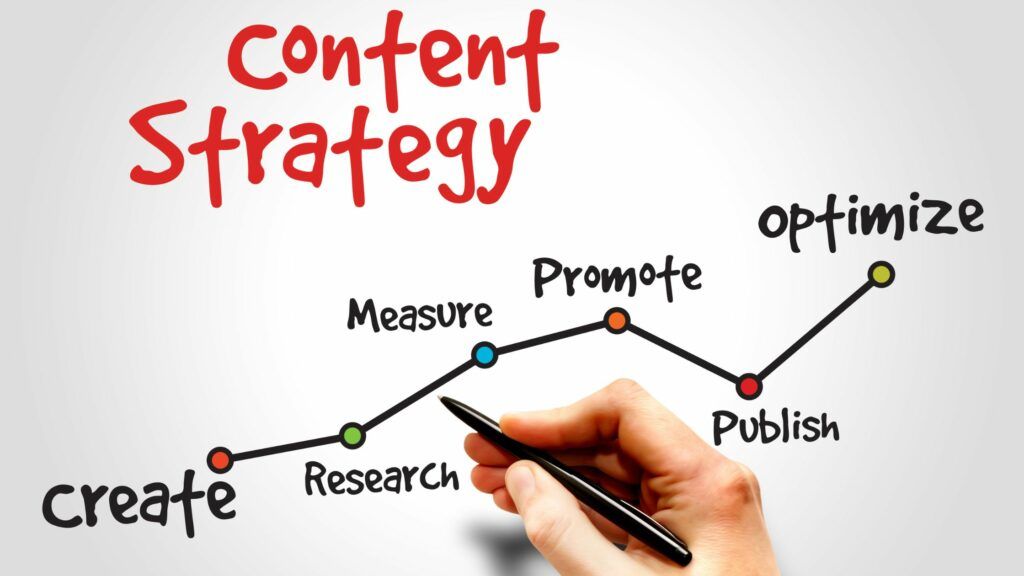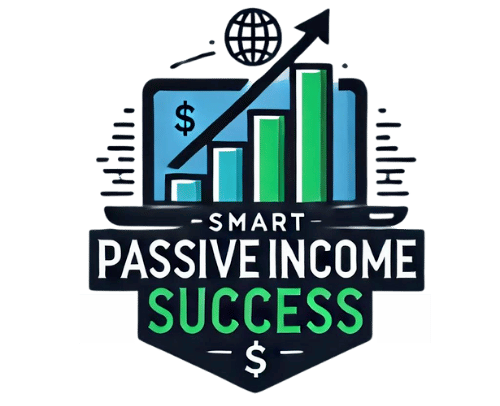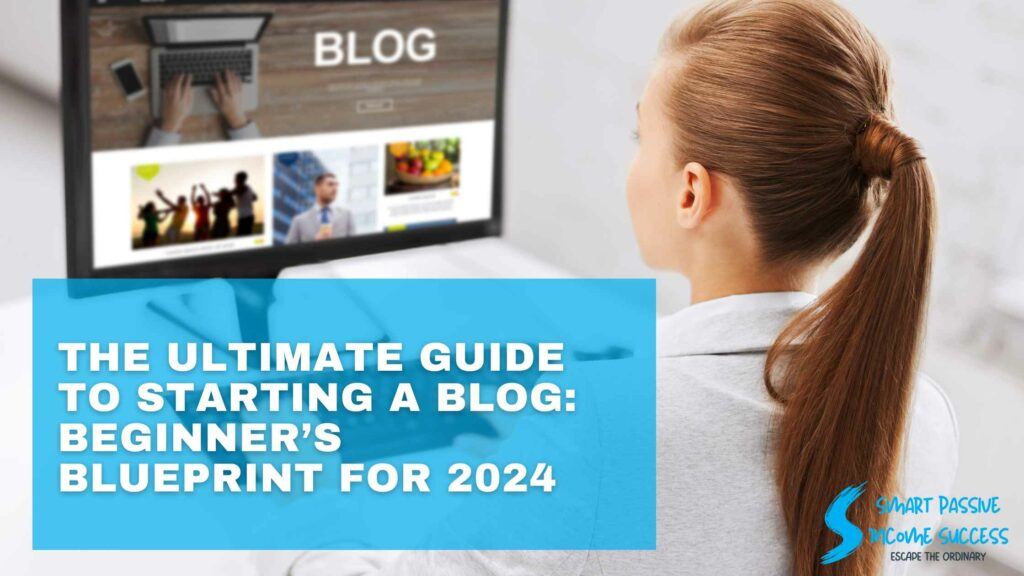I’m going to kick things off by painting a picture of the blogging universe. Believe it or not, starting a blog can be one of the most empowering steps you take in the digital world. It’s a platform where your voice can reach hundreds, thousands, or even millions. Whether you’re sharing your latest culinary adventures or offering financial advice, a blog can elevate your passion to new heights.
But this isn’t just about sharing stories or tips, it’s also about the tangible benefits that come with regular blogging. From sharpening your writing skills to building a professional network and establishing yourself as an industry expert, the upsides are endless. I want to help you realise the potential that blogging holds, not just as a pastime, but as a powerful tool for personal growth and professional development.
Through blogging, you can not only formulate and share your thoughts but can connect with like-minded individuals who share your interests. I’m here to guide you through the process as you align your blogging goals with what you’re truly passionate about, leveraging your unique insights and expertise.
Now that we’ve touched upon the ‘why’ of blogging, it’s time to tackle the ‘how.’ And that starts with finding the right niche. Your niche is your blog’s heartbeat – it’s what will keep your content focused and your audience coming back for more. So, let’s move on to unravelling the secrets of selecting a niche that resonates with both you and your potential readers.
Table of Contents
Finding Your Niche: Identifying a Unique Blogging Angle

Choosing a niche isn’t just about zeroing in on a topic; it’s about finding a space where your voice shines and your content resonates. Think of it as your personal corner of the internet where you’re the go-to expert.
Assessing Your Interests and Expertise
Assessing your interests and areas of expertise is a crucial first step. Make a list of what you’re passionate about and where your knowledge base lies. Do you have a hobby that you’re deeply involved in, or perhaps a professional field where you have special insight? That’s where you should start.
Understanding the Demand
Next, you want to look into the demand for information in your chosen area. Is there an audience looking for the kind of content you’re excited to create? Tools like keyword research and social media can provide a peek into what people are discussing and searching for.
Analysing the Competition
But let’s talk about competition. It’s important to understand who else is discussing your topics. Conduct a competitive analysis to see where you can differentiate yourself. This isn’t just about doing something no one else is; it’s about doing it better or with a unique twist.
The Benefits of a Well-Defined Niche
In my opinion, a well-defined niche does more than just attract the right audience. It helps you create content with precision and purpose because you know exactly who you’re talking to and what they need from you. That clarity is what turns first-time visitors into loyal followers.
Related Post: Passive Income Streams
Creating a Content Strategy: Planning for Success

When it comes to achieving success with your blog, aimlessly throwing content into the digital universe isn’t the most effective approach. That’s why having a solid content strategy is crucial. I’m going to walk you through the must-have steps to craft a content plan that’ll set your blog apart.
Starting with a Content Calendar
Start with a content calendar. This isn’t just about keeping posts regular; it’s about coordinating your topics to ensure a logical progression for your readers. You’re going to find out about tools and techniques to create this editorial road map, enabling you to plan seasonal content, series, and timely posts that resonate with your audience.
Understanding Your Audience
I’m here to help you understand your audience. This involves creating reader personas, and detailed representations of your blog’s ideal visitors. These personas detail their challenges, needs, and interests, which guide you in crafting content that speaks directly to them.
Balancing Evergreen Content with Trending Topics
Just as important, you’re going to balance evergreen content with trending topics. Evergreen content ensures your blog stays relevant over time while trending topics hook the audience’s immediate interest and can boost short-term traffic.
Keeping Your Strategy Dynamic
Remember, your content strategy should be dynamic. You can always adjust your approach down the road based on what resonates with your audience and what doesn’t. That’s the strategy I like to leverage because flexibility can be just as important as planning.
What’s Next? Building Your Foundation
Now, with your content strategy in place, what’s next? You’ll need a solid foundation to build upon. In the following section, I’ll go ahead and guide you through selecting the perfect blogging platform. This includes understanding the nuances between different platforms and helping you make an informed decision that aligns with your content strategy and blogging goals.
Related Post: Content Creation Strategies
Technical Setup: Choosing Your Blogging Platform

Getting into the nitty-gritty of starting a blog, you’re going to stumble upon what many consider a vital decision: picking the right blogging platform. Don’t worry too much about being locked in forever. You can always adjust your approach down the road. But for now, choose something that resonates with you and fits your technical comfort level.
Overview of Popular Blogging Platforms
I’m going to walk you through some of the most popular blogging platforms out there. We’re talking about powerhouses like WordPress, which gives you full control and lots of extras if you’re up for a bit of a learning curve. There’s also Blogger, Squarespace, and Wix, which are more straightforward and great for those who want a more plug-and-play type of experience.
Self-Hosted vs. Hosted Solutions
Now, should you go self-hosted or choose a hosted solution? If you’re gunning for maximum control and customisation, self-hosting with a platform like WordPress.org is your best bet. On the other hand, if you’d rather not get into the nitty-gritty of hosting, domain names, and all that jazz, then a hosted service like WordPress.com might suit you better. Personally, we recommend SiteRubix via Wealthy Affiliate.
Must-Know Technical Bits
What’s important to address here are the must-know technical bits. You’re going to need a domain name – that’s your blog’s address on the web. And you’ll have to consider the cost of hosting if you’re self-hosting. Remember, these are investments in your blogging journey that can pay dividends in credibility and flexibility.
Domain Names and Hosting
Your domain name is a crucial part of your blog’s identity. It should be memorable and relevant to your niche. When it comes to hosting, if you choose to go self-hosted, you’ll need to select a reliable hosting provider. This can impact your blog’s performance, security, and scalability.
Additional Features and Customisation
Different platforms offer varying levels of customisation and features. WordPress.org, for instance, has thousands of plugins and themes that allow you to tailor your blog to your exact specifications. In contrast, platforms like Wix and Squarespace offer beautiful templates and easy-to-use interfaces but might be limited in terms of customisation.
Cost Considerations
Budgeting is also a key part of your technical setup. While some platforms are free or offer free versions, investing in a premium version or additional services can enhance your blog’s professionalism and functionality. Factor in costs for domain registration, hosting, premium themes, and any plugins or apps you might need.
Making the Final Decision
Ultimately, the platform you choose should align with your goals, technical skills, and the type of blog you want to create. Take your time to explore each option, consider your future growth, and choose the one that feels right for you.
Related Post: Build a Successful Affiliate Website
Turn Your Passion into Profits
Designing Your Blog: Crafting an Engaging User Experience

Now, let’s focus on one of the most exciting parts of starting a blog: the design. Your blog’s design is like the front door to your home on the web. It’s the first thing people see, and it sets the tone for everything else. Think of it as an instant communicator of your blog’s personality and brand.
Balancing Aesthetics and Functionality
When it comes to blog design, you ought to hit the sweet spot between aesthetics and functionality. Start by choosing a theme that resonates with you, but also consider your readers’ experience. It should be attractive, of course, but also intuitive to navigate. Sites that are cluttered or confusing can drive readers away, no matter how good your content is.
Ensuring Responsive Design
The importance of a responsive design can’t be overstated. With more people than ever accessing content on-the-go, your blog needs to look great on devices of all sizes: phones, tablets, and desktops. Don’t worry too much about technical skills here; most modern themes come pre-built with responsiveness in mind.
Utilizing Visual Elements
Visual elements like images, infographics, and videos can do wonders for reader engagement. They break up text, illustrate points, and add a touch of personality. Choose visuals that support and enhance your content, and always ensure you have the right to use them. High-quality visuals can make your blog more appealing and professional.
Maximising Readability with Typography
Typography isn’t just about looking pretty; it’s about maximising readability. A font that’s too small or tough to read can push readers away. Opt for clean, web-friendly fonts. Remember, the goal is to keep your audience reading. Pay attention to line spacing and contrast to make your text easy on the eyes.
Adding Personal Touches
If you want to, you can add a personal touch with customisable widgets and plugins. A unique about-me section, a spot for top posts, or an easy-to-find search bar can make your blog feel like a well-thought-out space designed for exploration and interaction. These elements can also help build a stronger connection with your readers.
Creating a Cohesive Visual Identity
Your blog’s colour scheme, logo, and overall visual style should create a cohesive identity that aligns with your brand. Consistency in design elements fosters recognition and trust among your audience. Make sure your design choices reflect the tone and purpose of your blog.
Testing and Iterating
Design is an ongoing process. Don’t be afraid to test different elements and gather feedback from your readers. Use analytics to see how visitors interact with your site and make adjustments as needed. Iterative improvements can help refine your blog’s design to meet your audience’s needs better.
Related Post: Passive Income Opportunities With Little Money
Writing Irresistible Content: Engage, Inform, and Inspire

If you’ve ever read a blog post that stuck with you long after you closed the tab, that’s the power of irresistible content. It’s not just about stringing together words to communicate an idea; it’s about creating an experience for your readers. You’re going to find out about mastering the art of engaging content that doesn’t just capture attention but holds it. Check out our “Tips to Writing Engaging Blogs Posts” guide for a more in-depth guide.
Crafting Magnetic Headlines
A magnetic headline is your first handshake with the reader. It has to be firm, friendly, and intriguing. It’s less about finding the fanciest words and more about making a promise that your post will fulfil. Effective headlines often include numbers, invoke curiosity, or address a specific problem that your target audience faces.
Structuring Your Posts
Let’s break down the structure of your posts. Your opening should hook readers instantly, perhaps with a surprising fact or an emotive story. Follow this with short, readable paragraphs, headings for organisation, and bullet points for easy scanning. Choose a writing style that resonates with your own voice: if humour is your thing, let it shine; if you’re more about the facts, keep it tight and to the point.
Infusing Personality into Your Writing
Personality is the secret sauce of your blog. People don’t return to your site just for information. They come back for YOU. Share personal stories and insights, write like you talk, and let readers see behind the curtain. This builds trust and keeps readers coming back for more because they connect with you, not just your content.
Creating Engagement with Your Closing
As you wrap up, always aim to leave your reader with something: a call to action, a thought-provoking question, or an invitation to comment. You’re not just ending a post; you’re starting a conversation. Encourage your readers to interact with your content and build a community around your blog.
Transitioning to SEO Essentials
And this brings us to seamlessly move into SEO essentials. Irresistible content doesn’t count for much if it isn’t seen. SEO is about making sure your artfully crafted posts are discoverable by your target audience. So let’s talk about how to make those fantastic posts SEO-friendly. But, don’t worry too much about it being a daunting task, I’ll walk you through the essentials step by step.
Related Post: Optimizing Your Website For Search Engines
SEO Essentials: Optimising Your Blog for Discovery

I’m going to let you in on some SEO secrets that’ll help people find your blog. This isn’t just about stuffing keywords; it’s also about making your blog friendly to both readers and search engines. First up, you’ve got to understand what SEO, or Search Engine Optimization, actually is. It’s a bunch of strategies that make your blog more visible in search engine results. It’s like setting up a neon sign on the internet highway – you want searchers to find you easily. Heres a more in-depth guide.
Keyword Research
Keyword research is your starting block. You’re looking for words or phrases that your potential readers type into search engines. Don’t guess what these are. Make use of tools like Google’s Keyword Planner or Jaaxy to get into your audience’s head. Identify long-tail keywords that are relevant to your niche and have a good search volume but lower competition.
Incorporating Keywords Naturally
Once you have your keywords, weave them into your content naturally. Search engines are smart; they can tell when you’re trying to game the system and may penalise your blog for it. Your readers can tell, too – and they won’t like it. Use keywords in your headlines, subheadings, and throughout your post, but always prioritise readability and value.
On-Page SEO
Now, on-page SEO is critical. This includes meta descriptions, headers, image alt text, and URL structure. Think of it as the backstage crew that makes your blog’s performance sparkle. Each factor works together to boost your blog’s relevance in searches. Write compelling meta descriptions that include your primary keywords, appropriately use header tags (H1, H2, H3), and ensure your URLs are clean and keyword-rich.
Optimising Page Speed
Your blog’s loading speed is a part of SEO, too. Slow-loading pages can harm your search rankings and bounce rates. You’re going to want to ensure your images are optimized and your code is clean. Use tools like Google PageSpeed Insights to identify and fix issues that are slowing down your site.
Ensuring Mobile-Friendliness
Don’t forget to make your blog mobile-friendly. More people than ever are browsing on their phones, so a blog that looks good and works well on mobile is SEO gold. Use responsive design techniques and test your site on various devices to ensure a seamless experience for all users.
Building Quality Links
And lastly, who doesn’t love a good link-building strategy? Secure links from reputable sites to yours. This not only directs traffic to your blog but also tells search engines that your content is valuable and credible. Focus on earning backlinks from high-authority sites and avoid questionable link-building practices that can lead to penalties.
Transitioning to Promotion and Networking
I’m about to transition into promotion and networking, which, believe it or not, tie into SEO as well. Quality backlinks from your networking efforts can significantly boost your SEO efforts, and social signals from promotions indicate to search engines that your content is relevant and valuable. Engaging with your audience and building relationships in your niche can amplify your reach and improve your search rankings.
Related Post: Why Turning Your Hobby Into A Profitable Side Hustle Could Be Your Best Decision
Promotion and Networking: Growing Your Blog's Audience

Do you know that fantastic feeling when you hit ‘publish’ on a new post? But wait, now come the crickets? Well, let’s fix that. Growing your blog’s audience isn’t just about throwing content into the wind; it’s about strategically attracting and retaining readers. In this section, we’ll focus on promoting your blog and networking effectively.
Leveraging Social Media
Social media isn’t just for cat videos and memes; it’s a potent tool for bloggers. Think about which platforms your target audience loves and be there. Consistent, engaging posts that funnel readers back to your blog can dramatically increase your visibility. Don’t be shy to join conversations and share your insights — it’s all about building relationships. Utilise platforms like Twitter, Facebook, Instagram, and LinkedIn according to where your audience is most active.
Engaging with the Blogging Community
The blogging community is chock-full of creative souls. These people are potential allies, not just competition. Commenting on other blogs, participating in forums, and collaborating on projects can introduce you to new audiences. Remember, building bonds with fellow bloggers can lead to cross-promotion and shared growth. Engage genuinely with their content, provide valuable insights, and support their efforts as well.
The Power of Guest Blogging
Let’s talk about guest blogging. If you’re thinking, ‘Why should I give my content away?’ you’re missing a golden opportunity. Guest posting on reputable sites can earn you quality backlinks, broaden your reach, and establish you as a thought leader in your niche. Plus, you can always return the favour, inviting others to share their insights with your readers. This exchange can bring fresh perspectives to your blog and tap into new audiences.
Building a Core Community
As we move towards monetising your blog, understand that every follower counts. Not just because they might click on ads or buy a product, but because they can become part of your core community and even advocate on your behalf. Engage with your readers through comments, social media interactions, and email newsletters. Show appreciation for their support and encourage feedback to foster a loyal and active community.
Moving Towards Monetisation
So gear up; we’re about to turn passion into profit in our final section. By consistently promoting your blog and networking effectively, you lay the groundwork for monetisation. Building a dedicated audience is key to successful monetisation strategies, which we’ll explore in the upcoming section.
Related Post: Making Money While you Sleep
Monetizing Your Blog: Turning Passion into Profit

Once you’ve built a solid foundation and grown your audience, it’s time to think about monetising your blog. Monetisation is the process of converting your blog’s traffic and influence into revenue. There are several strategies you can employ, each with its own set of advantages and considerations.
Advertising
One of the most common ways to monetize a blog is through advertising. Programs like Google AdSense allow you to display ads on your blog and earn money when visitors click on them. You can also sell ad space directly to businesses in your niche. To maximise earnings, ensure your blog has high traffic and that the ads are relevant to your audience.
Affiliate Marketing
Affiliate marketing involves promoting products or services on your blog and earning a commission for any sales made through your referral links. Join affiliate programs related to your niche, and integrate these links naturally into your content. Reviews, tutorials, and resource lists are effective ways to incorporate affiliate links.
Sponsored Posts
As your blog grows, you might attract offers for sponsored posts. These are posts that companies pay you to write, either about their product or a topic related to their industry. Ensure that sponsored content aligns with your blog’s values and interests, and always disclose these posts to maintain transparency with your readers.
Selling Products or Services
You can also monetize your blog by selling your own products or services. This could include eBooks, online courses, merchandise, or consulting services. Use your blog to showcase your expertise and provide value to your readers, creating a natural lead into your offerings.
Membership or Subscription Models
Another option is to create a membership or subscription model for your blog. Offer exclusive content, such as in-depth articles, videos, or downloadable resources, to subscribers who pay a monthly or yearly fee. Platforms like Patreon can help you manage memberships and provide an additional revenue stream.
Donations and Crowdfunding
If your readers find value in your content, they might be willing to support you through donations. Platforms like PayPal, Ko-fi, or Patreon allow you to accept one-time or recurring donations. You can also use crowdfunding to fund specific projects or improvements for your blog.
Leveraging Email Marketing
Building an email list is crucial for long-term monetisation. Use email marketing to promote your products, affiliate links, and sponsored content directly to your subscribers. Offer valuable content, discounts, or exclusive offers to keep your audience engaged and encourage them to support your monetization efforts.
Tracking and Adjusting Your Strategy
As with any aspect of blogging, it’s important to track your monetization efforts and adjust your strategy as needed. Use analytics tools to monitor which methods are most effective and continuously optimize your approach to maximize revenue.
By implementing these monetization strategies, you can turn your blogging passion into a profitable venture while continuing to provide valuable content to your audience.
Turn Your Passion into Profits
Conclusion: Paving the Way Forward with Your Blog

By now, you’re well-equipped with the knowledge to transform your blogging dreams into reality. Crafting your online presence through a blog isn’t just about expressing yourself; it’s also about connecting with others and possibly turning your passion into profit.
Remember, your blogging journey is uniquely your own. Choose something that resonates with you and don’t worry too much about getting everything perfect from the get-go. Your first attempt doesn’t need to be your last, and you can always adjust your approach down the road.
In my opinion, the true success of a blog is measured by the value it provides to its readers and the joy it brings to you as its creator. So, keep refining your content, engage with your community, and stay true to your vision and values.
If you ever feel overwhelmed or uncertain, I’m here to help you with advice, and strategies, or just to offer a listening ear. The world of blogging is dynamic; a lot is happening very quickly, but that means there’s a lot of opportunity in it for you too.
I really hope that you’ve found this guide helpful and that it’s inspired you to take the first step, or the next step, in your blogging journey. Thanks for reading, and I’d love to hear your feedback—share your thoughts and ask questions in the comments section.







Despite warnings on various sites that blogging is “old hat” I’m still a great believer in the power of the written word. However, I worry that many blogs are too impersonal, and the main culprit is Artificial Intelligence. AI is a fantastic tool when used correctly and can give the author some great ideas for subject headings and content. But when the author simply posts a blog without any personal input, it stands out like the proverbial sore thumb. Too many AI blogs use the same phrases over and over and it doesn’t take long for the reader to see through this. The result is that the blog isn’t taken seriously and is a waste of time for the blogger and reader alike. So yes, long live blogging and let’s hope human input outlasts a machine. Your post certainly directs the reader toward structuring their blogs sensibly and clearly,
Hey,
Thanks for checking out my blog post. There are many advantages to using AI to help you as a blogger. But it should be used to make you more efficient and not replace your own voice. The aim is to present yourself.
Providing genuine value to your readers has always been at the forefront of blogging.
AI is new and it can easily lead people to being lazy with it. You need to create loads of content, which scares some people. The thinking with AI is that they can create loads of content without thinking about it themselves. But even if you do use AI to help with content creation, you should still make it your own before you publish…
Let’s hope people find a healthy balance with their blogs…
Thanks for getting in touch,
John
First of all, I have to say that I am delighted with the design of your site. It is so clean and clear that it is a real pleasure to read your texts. And that’s exactly what boosts your credibility when you write about starting a blog. You explained everything very well, and what I liked most was the idea that I could still earn money through Wealthy Affiliates. It is creative, beautiful, and useful. Great text! Thank you!
Hi there,
Thank you so much for your kind words! I’m thrilled to hear that you enjoyed the design of my site and found it clean and clear. It’s incredibly rewarding to know that the design enhances your reading experience and boosts the credibility of the content.
I’m glad you found the information on starting a blog helpful and that the idea of earning money through Wealthy Affiliates resonated with you. It’s wonderful to hear that you found the post both creative and useful.
Your feedback means a lot to me, and it’s comments like yours that inspire me to continue creating valuable content. If you have any questions or need further guidance, feel free to reach out. Thanks again for your support and encouragement!
Regards
John